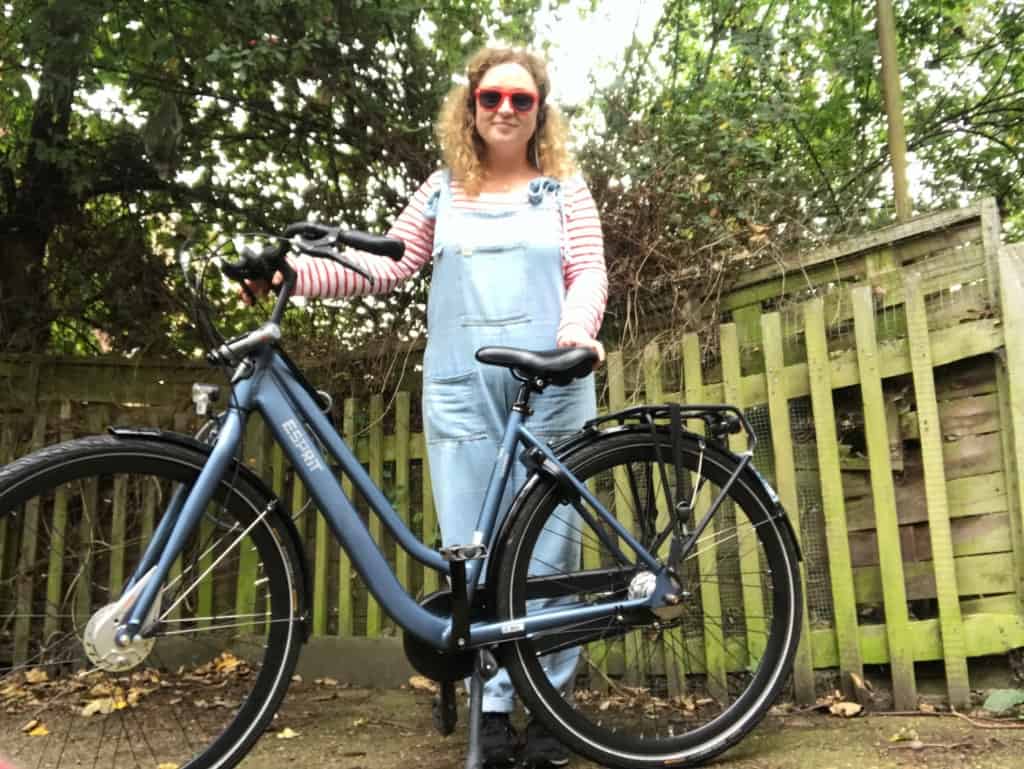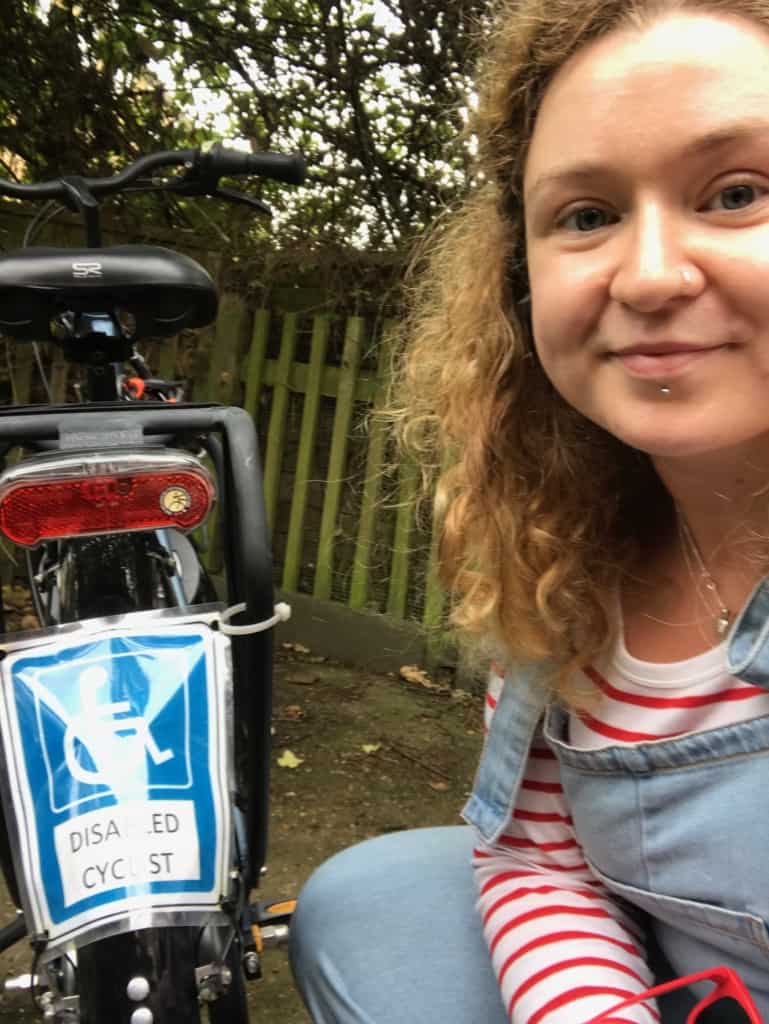Aisling Gallagher is a Lewisham Councillor and Disabled cyclist. If you’d like to learn more about their journey into cycling, then keep on reading…

Becoming a cyclist
I got into cycling when I was elected as a councillor in Lewisham, back in 2018. I wanted to be able to get to work in the evenings and around my ward quickly.
I had been interested in trying out cycling for a while, but was always very anxious because of traffic and my health (I have a chronic pain condition that can be extremely debilitating). However, my friend – a Disabled cyclist – told me that cycling was actually a lot less painful for her than walking, and so I was keen to see if there was any truth to this for me.
I hired a bike from Lewisham Council, which cost £10 to try out for the month, and really loved it. I had a 1-2-1 cycling lesson via the council to learn the basics of safe road cycling, which as someone who doesn’t drive was extremely helpful. When the month was up I was able to receive a discount on my bike through my workplace, making it much more affordable. The bike shop was really helpful in finding me one that was both within my budget and comfortable – my chronic pain condition means that comfort always has to be key.
The power of cycling, especially during lockdown
In normal times, I would have been cycling to my day job several times a week from April or May. Last summer I started cycling to work and once I figured out the route, it was amazing. I’m a caseworker and my job can be very stressful, so cycling was a really good way to begin at the start and decompress at the end of a long day, cycling home in the evening sun. I’ve really missed being able to cycle the route; I’d completed it a few times over the past months, but it felt strange cycling to but not actually being at work.
At the start of the pandemic, cycling was incredible – the streets were so empty and quiet. It was amazing and really made me realise how much anxiety I feel when I have to cycle alongside cars. I didn’t go out much at first because I was so anxious, but when I did it felt so much nicer. Now things are becoming more normal; it’s back to usual levels of traffic. This is making the main roads a lot more stressful than they have been in the last few months, which is a great shame. Last weekend I cycled around some of the low traffic neighbourhoods in south London and it made me realise what’s possible if we commit to prioritising cyclists and pedestrians.
When restrictions began to lift, I joined the Lewisham Cyclists’ rides. I had never been able to make them before, but the last few months made me realise how important cycling is to me and how much I had missed it. We did a group cycle to Hyde Park, and I was really emotional. In the two years of owning a bike, I’d always wanted to go into central London, but never felt able to do it on my own because of the anxiety. Being a Disabled cyclist can be hard, and I sometimes beat myself up for not being able to do something that others can do so easily.
However, riding with a group of people where I didn’t have to worry about the route was so liberating; I was able to enjoy cycling without worrying. My friend took me on a few rides after that to show me how to get into central London, and then I cycled on my own to Southbank – I was really proud of myself! I got a bit lost on the way back but didn’t have a panic attack, which felt like a huge achievement.
Facing the everyday barriers to cycling
I find it extremely difficult to cycle a new route on my own. A lot of autistic people find journeys to unfamiliar places stressful and anxiety-inducing, and I’m no different. I’ve given myself permission not to force this because it takes the enjoyment out of cycling for me. This means that if I want to go somewhere new on my bike, I need someone who knows the route to cycle with me. Becoming accustomed to a route can take 10+ trips, so it can take a while before I’m able to enjoy the cycle. This is frustrating, but I try not to punish myself for something I can’t control, and just build in extra time until I know the whole journey well.
My chronic pain condition flares up at inconvenient times, so I have to be prepared to go a bit slower or accept my body can do less on certain days. This can be hard, but it’s important. I purposefully bought a very comfortable bike to help with my pain as much as possible. Cold weather always leads to a lot more pain, so I don’t tend to cycle during winter. As I hate cycling in the rain, I’ve come to accept that I’m someone who gets a mix of public transport and cycling – I don’t have to cycle every single journey to be a cyclist.
I’m more sensitive to noise and bright lights, so I almost always wear sunglasses when I cycle (unless it’s night-time) and listen to music at a low volume through headphones. The sudden noises that vehicles make can be really difficult for me to deal with, but the music helps. Drivers beeping their horns when they don’t have any need to, or they’re feeling impatient because I’m going slowly is extremely stressful.
I’ve created a ‘Disabled Cyclist’ sign for the back of my bike as a way to try and make drivers more mindful. I also want other people to see [the sign] and know that Disabled cyclists exist, even if we don’t ‘look’ Disabled.

